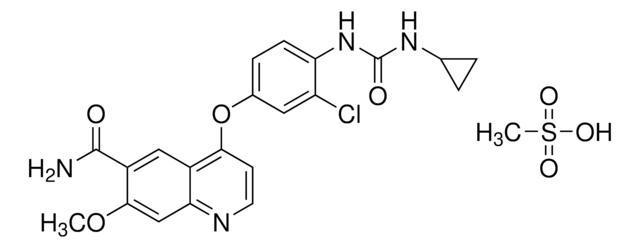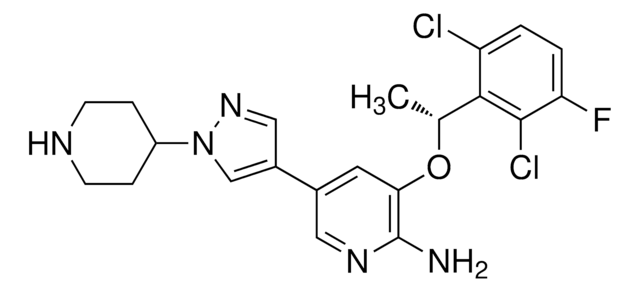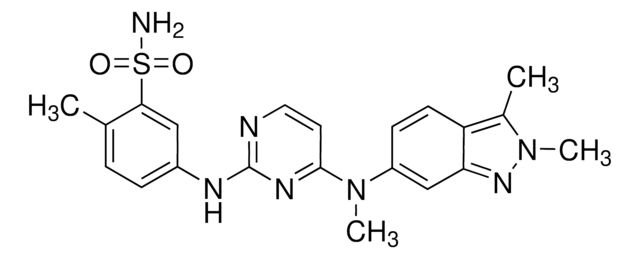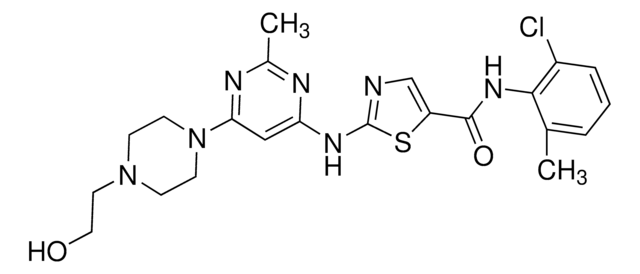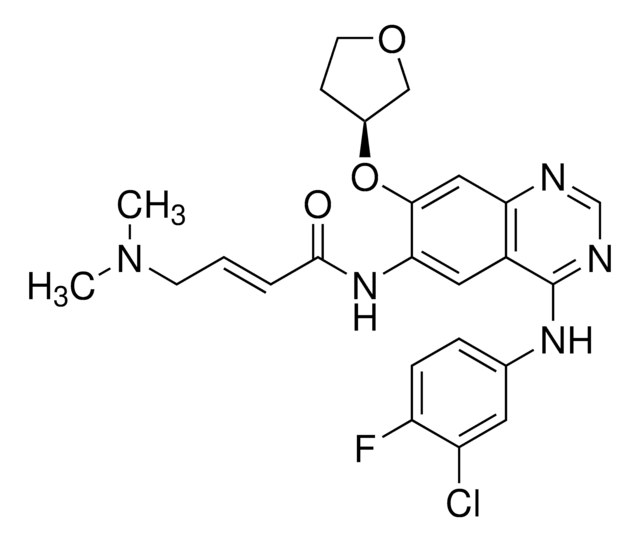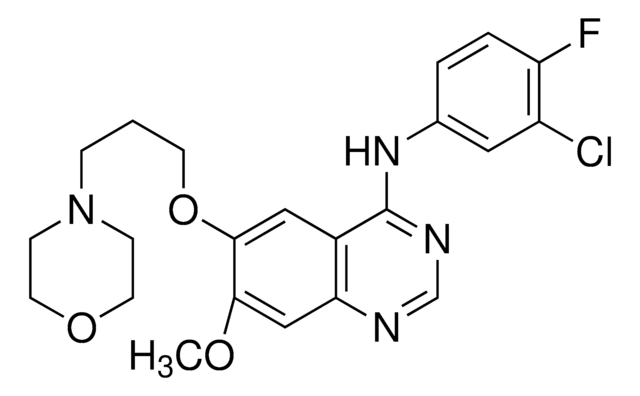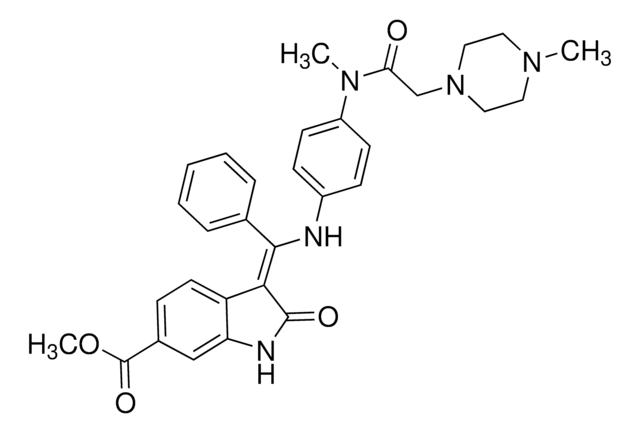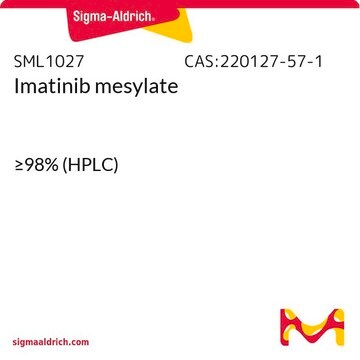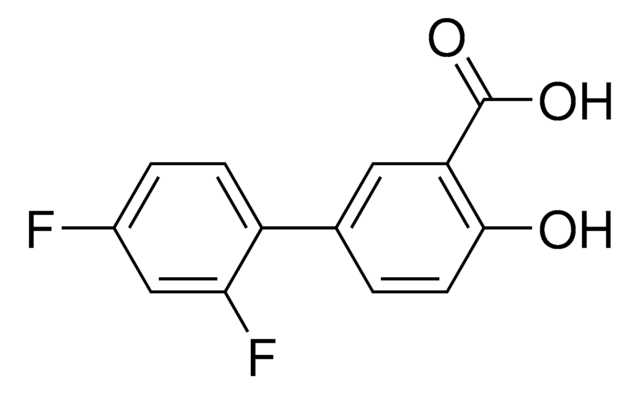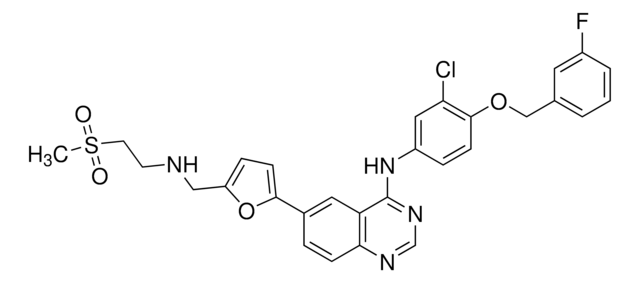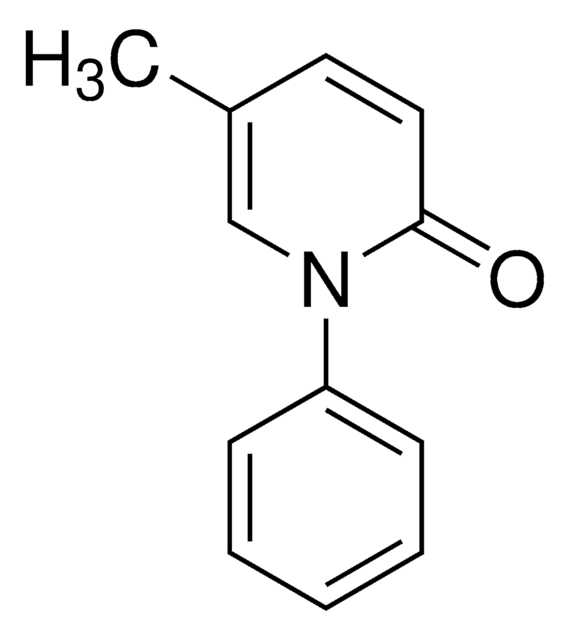PZ0193
Axitinib
≥98% (HPLC), powder, tyrosine kinase inhibitor
Synonyme(s) :
AG-013736, N-Methyl-2-((3-((1E)-2-(pyridin-2-yl)ethenyl)-1H-indazol-6-yl)sulfanyl)benzamide
About This Item
Produits recommandés
Nom du produit
Axitinib, ≥98% (HPLC)
Essai
≥98% (HPLC)
Forme
powder
Couleur
white to tan
Solubilité
DMSO: ≥8 mg/mL
Température de stockage
room temp
Chaîne SMILES
CNC(=O)c1ccccc1Sc2ccc3c(\C=C\c4ccccn4)n[nH]c3c2
InChI
1S/C22H18N4OS/c1-23-22(27)18-7-2-3-8-21(18)28-16-10-11-17-19(25-26-20(17)14-16)12-9-15-6-4-5-13-24-15/h2-14H,1H3,(H,23,27)(H,25,26)/b12-9+
Clé InChI
RITAVMQDGBJQJZ-FMIVXFBMSA-N
Informations sur le gène
human ... FLT1(2321) , FLT4(2324) , KDR(3791)
Catégories apparentées
Application
Actions biochimiques/physiologiques
Caractéristiques et avantages
Informations légales
Mention d'avertissement
Warning
Mentions de danger
Conseils de prudence
Classification des risques
Acute Tox. 4 Oral - Aquatic Acute 1
Code de la classe de stockage
11 - Combustible Solids
Classe de danger pour l'eau (WGK)
WGK 3
Point d'éclair (°F)
Not applicable
Point d'éclair (°C)
Not applicable
Faites votre choix parmi les versions les plus récentes :
Certificats d'analyse (COA)
Vous ne trouvez pas la bonne version ?
Si vous avez besoin d'une version particulière, vous pouvez rechercher un certificat spécifique par le numéro de lot.
Déjà en possession de ce produit ?
Retrouvez la documentation relative aux produits que vous avez récemment achetés dans la Bibliothèque de documents.
Les clients ont également consulté
Notre équipe de scientifiques dispose d'une expérience dans tous les secteurs de la recherche, notamment en sciences de la vie, science des matériaux, synthèse chimique, chromatographie, analyse et dans de nombreux autres domaines..
Contacter notre Service technique